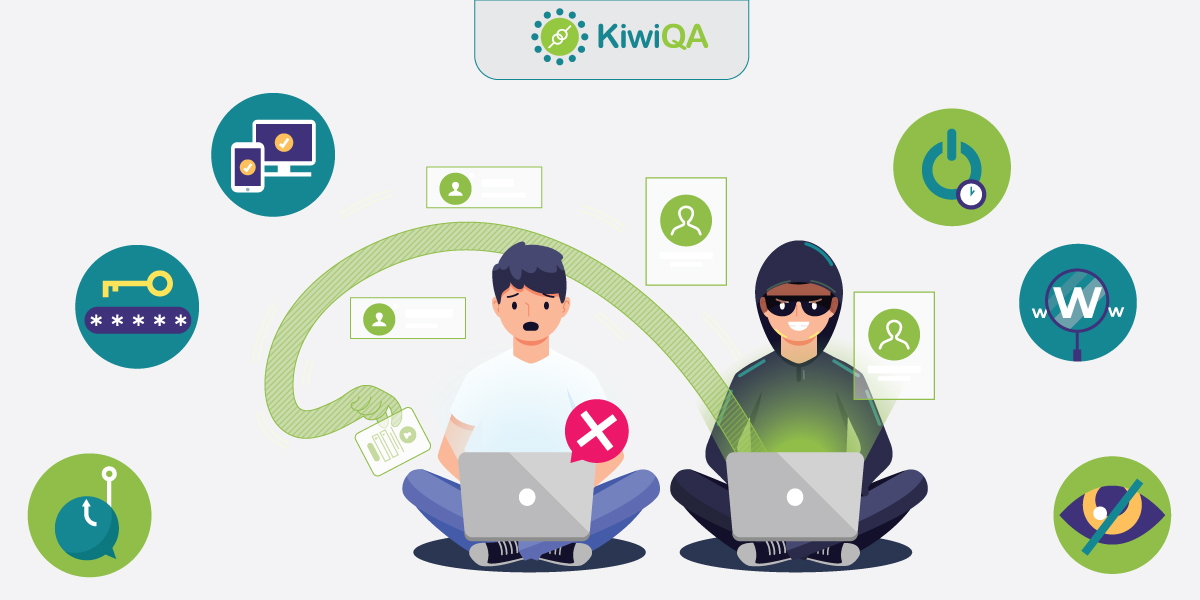Key Stages of Penetration Testing

 KiwiQA
KiwiQAThe phrase ‘Data is the new oil’ by Clive Humby coined back in 2017 has much more relevance in 2022. Each one of us leaves a digital trail (or digital footprint) when browsing the internet. This is one of the reasons why every technology company can now be considered a Data company.
Companies are now leveraging the benefits offered by data mining and data analytics to enable new revenue streams. However, enterprises also need to take care of the security aspects of the offerings. Cyber-attacks, particularly ransomware attacks[1], are on a significant rise since malicious actors want to make the most of the sensitive information (to which they gain access using incorrect means).
This is where penetration testing (or pen testing) becomes extremely important, as it lets you identify the potential vulnerabilities in the system. Developers can patch the vulnerability so that the system becomes more secure and less vulnerable to cyber-attacks. Companies that do not have expertise on penetration testing must partner with a penetration testing company like KiwiQA that has personnel that have expertise in conducting penetration tests at scale.
However, planning and executing penetration tests on a frequent basis is depending on how well the penetration testing strategy has been chalked out. In this blog, we deep dive into the pivotal stages of penetration testing; understanding of which will help you in building a more formidable penetration testing strategy.
Penetration testing (also referred as Pen testing ) is the form of testing that lets you unearth risks, vulnerabilities, and data breaches in the website (or application). Penetration testing is much more advantageous in comparison to a vulnerability scan since the tests let you simulate actual attacks; thereby helping build a more secure website (or application).
Penetration testing involves exploiting the potential security issues in servers, networks, firewalls, third-party APIs, and more. For example, unauthorized inputs on websites are more prone to attacks using code injection. The injected code could turn out to be a security nightmare for your employees (as well as the customers)!
Also Read – 5 Reasons Why Penetration Testing Is Important
Some of the commonly used penetration testing services for building a more secure application are:
All the above forms of penetration testing techniques might not be applicable for every application. Hence, the security team needs to plan and prioritize the pen testing techniques that are more relevant to the application that is under development.
Here are some of the major reasons why enterprises (as well as startups) perform penetration testing:
As far as tools are concerned, Wireshark, OpenSSL, and NMap are some of the most popular open-source tools for penetration testing 🙂
Now that I have touched upon the basics of penetration testing, the important question is how frequently should the security team run pen tests? Well, the frequency is completely relative since it all depends on the type and complexity of the application.
Having said that, here are some of the standard rules that can be applied to scheduling penetration tests:
It is recommended to make penetration testing an integral part of the software testing process so that a highly secure and functional product is used by the end customer(s).
When it comes to executing penetration tests, either of the following strategies can be used:
Also Read – Should Small Businesses Opt for Penetration Testing?
Now that I have covered how frequently penetration tests need to run, it’s time to look at the important stages of penetration testing. The points being mentioned here will help in building a pen testing strategy that helps in building a more secure product.
Like any other form of project, this phase involves the study of the infrastructure, website, application, third-party APIs, etc. to understand the security aspects from each & every angle.
The Security, DevSecOps, and other teams need to don the hats of a hacker and list down the potential vulnerabilities that might arise after doing a thorough research.
In this particular stage, the team takes a detailed look at the open ports, services, apps, APIs, etc. that are more susceptible to attacks.
Here, the test team needs to identify the most suitable pen testing techniques that might be relevant to the product (or project). By the end of this stage, the team will have clarity about the entry points and vulnerabilities in the environment.
Also Read – How To Perform Penetration Testing For E-Commerce Applications?
This is where the performance and security testing team does a manual & automated scanning of the vulnerabilities in the system.
Employee data, customer data, business logic, database connectivity, and internal (i.e. vendors, employees, etc.) & external threats (i.e. network traffic, ports, etc.) are scanned for any level of vulnerability.
The findings are listed in a report for ensuring that security patches are applied for fixing the vulnerabilities and building a more secure application.
At this particular stage, the team has information about the best-suited method for unearthing the security issues in the system. This is where the plan is put to execution.
Wearing the hat of an attacker, the following exploits are planned:
By now, the security and penetration testing team will have information about the vulnerabilities, severity of the same, and details on how to tackle the same. Now that the risk (or threat) analysis has been done, the next step is to document all the threats and update the same from time to time.
The well-structured report can give a brief overview of all the security aspects of the application. It can be shared with the respective stakeholders so that they get timely updates about the application’s security. On the whole, more severe vulnerabilities must be taken up on priority to minimize the damage done to the application.
With every user leaving behind a data trail, it becomes companies to focus on the security aspects of the application. This is where penetration testing can play a huge role in unearthing the security vulnerabilities in the product.
Companies must partner with QA vendors that have expertise in providing penetration testing services, so that security risks can be minimized at a faster pace.
Subscribe to our newsletter for some hand-picked insights and trends! Join our community and be the first to know about what's exciting in software testing.
Welcome to the testing tales that explore the depths of software quality assurance. Find valuable insights, industry trends, and best practices for professionals and enthusiasts.

Fill out and submit the form below, we will get back to you with a plan.
 CRN:
22318-Q15-001
CRN:
22318-Q15-001 CRN:22318-ISN-001
CRN:22318-ISN-001 CRN:22318-IST-001
CRN:22318-IST-001